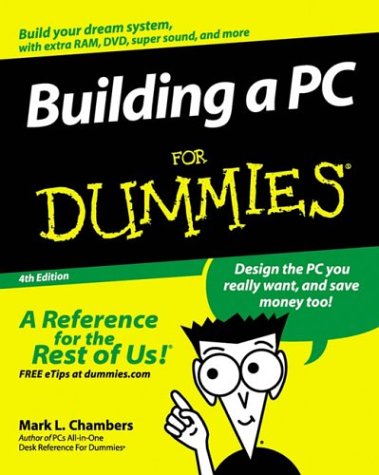United States Government For Dummies

The United States Government is a complex system that has been in place for over two centuries. It is a federal republic, consisting of three branches: the legislative, executive, and judicial. Understanding how the government works can be a daunting task, especially for those who are new to the subject. In this article, we will break down the basics of the US government, exploring its structure, functions, and key players.
Key Points
- The US government is a federal republic with three branches: legislative, executive, and judicial.
- The legislative branch is responsible for making laws, while the executive branch enforces them.
- The judicial branch interprets the laws and ensures they align with the Constitution.
- The government is divided into federal, state, and local levels, each with its own powers and responsibilities.
- Citizens play a crucial role in the government through voting, paying taxes, and participating in the democratic process.
Structure of the US Government

The US government is divided into three branches: the legislative, executive, and judicial. The legislative branch, composed of Congress, is responsible for making laws. Congress is bicameral, consisting of the House of Representatives and the Senate. The House has 435 members, each representing a district in one of the 50 states, while the Senate has 100 members, with two representatives from each state.
The executive branch, headed by the President, is responsible for enforcing the laws. The President is both the head of state and the head of government, serving as the commander-in-chief of the armed forces and conducting foreign policy. The President is also responsible for appointing federal judges, including Supreme Court justices, and signing bills into law.
The judicial branch, composed of the Supreme Court and lower federal courts, is responsible for interpreting the laws and ensuring they align with the Constitution. The Supreme Court has the final say on matters of federal law and the Constitution, with its decisions being binding on all lower courts.
Separation of Powers
The US government is designed with a system of checks and balances, ensuring that no one branch has too much power. The separation of powers is a fundamental principle of the US government, preventing any one branch from dominating the others. For example, Congress can impeach the President, while the President can veto laws passed by Congress. The Supreme Court, in turn, can declare laws passed by Congress or actions taken by the President as unconstitutional.
This system of checks and balances is designed to prevent abuses of power and protect individual rights. It also ensures that power is distributed evenly among the branches, preventing any one branch from becoming too powerful.
Functions of the US Government

The US government has several key functions, including providing for national defense, regulating commerce, and protecting individual rights. The government is also responsible for providing public goods and services, such as education, healthcare, and infrastructure. Additionally, the government plays a crucial role in regulating the economy, enforcing laws, and maintaining social order.
The government also has a significant impact on the economy, with its fiscal policies and regulations influencing the overall direction of the economy. The government’s monetary policy, set by the Federal Reserve, also plays a crucial role in stabilizing the economy and controlling inflation.
Role of Citizens
Citizens play a crucial role in the US government, participating in the democratic process through voting, paying taxes, and engaging in civic activities. Citizens have the right to free speech, assembly, and petition, allowing them to express their opinions and influence government policy. Citizens also have the right to bear arms, ensuring their safety and security.
Citizens can also participate in the government by running for office, joining political parties, and engaging in activism. By participating in the democratic process, citizens can hold their elected representatives accountable and shape the direction of the government.
| Branch of Government | Key Functions |
|---|---|
| Legislative | Making laws, approving presidential appointments, controlling government spending |
| Executive | Enforcing laws, commanding the armed forces, conducting foreign policy |
| Judicial | Interpreting laws, declaring laws unconstitutional, resolving disputes between states |

State and Local Government
The US government is divided into federal, state, and local levels, each with its own powers and responsibilities. The federal government has the power to regulate commerce, declare war, and conduct foreign policy, while state governments have the power to regulate education, transportation, and public safety. Local governments, such as cities and counties, have the power to provide public services, such as police and fire protection, and regulate zoning and land use.
State and local governments also have a significant impact on the economy, with their policies and regulations influencing the overall direction of the economy. State and local governments can also provide public goods and services, such as education, healthcare, and infrastructure, which are essential for the well-being of citizens.
Intergovernmental Relations
The federal, state, and local governments interact with each other through a system of intergovernmental relations. The federal government provides funding to state and local governments for various programs, such as education, healthcare, and infrastructure. State and local governments also have the power to regulate certain areas, such as environmental protection and public safety, which can impact the federal government’s policies.
The relationships between the federal, state, and local governments are complex and multifaceted, with each level of government having its own powers and responsibilities. By understanding these relationships, citizens can better navigate the government and make informed decisions about the issues that affect their lives.
What is the main function of the legislative branch?
+The main function of the legislative branch is to make laws. Congress, which is composed of the House of Representatives and the Senate, is responsible for introducing, debating, and voting on bills.
What is the role of the judicial branch?
+The judicial branch, composed of the Supreme Court and lower federal courts, is responsible for interpreting the laws and ensuring they align with the Constitution. The Supreme Court has the final say on matters of federal law and the Constitution.
How do citizens participate in the government?
+Citizens participate in the government by voting, paying taxes, and engaging in civic activities. Citizens can also run for office, join political parties, and engage in activism to influence government policy.
Meta description suggestion: “Learn about the basics of the US government, including its structure, functions, and key players. Understand the role of citizens and the relationships between the federal, state, and local governments.” (147 characters)



